How to Train a Wisteria into a Bonsai Tree
The Wisteria is a deciduous twining climber native to Japan and China. Once established, this vigorous twining vine can grow up to 10 feet yearly. It’s mainly used as a decorative cover for walls and fences. The Wisteria is also known as the Purple Rain twining vine because of the bunches of purple flowers that it bournes in spring on the naked branches. It also has beautiful foliage after the exquisite flower display.
Wisteria is a woody vine that can grow over a hundred years old. They are fast growers but can take up to five years before they start flowering. The woody, gnarled trunk and branches and beautiful flower display make the Wisteria a great specimen for Bonsai growers. The big question is, how to train a wisteria into a tree, from a fast-growing climber vine into a miniature bonsai tree?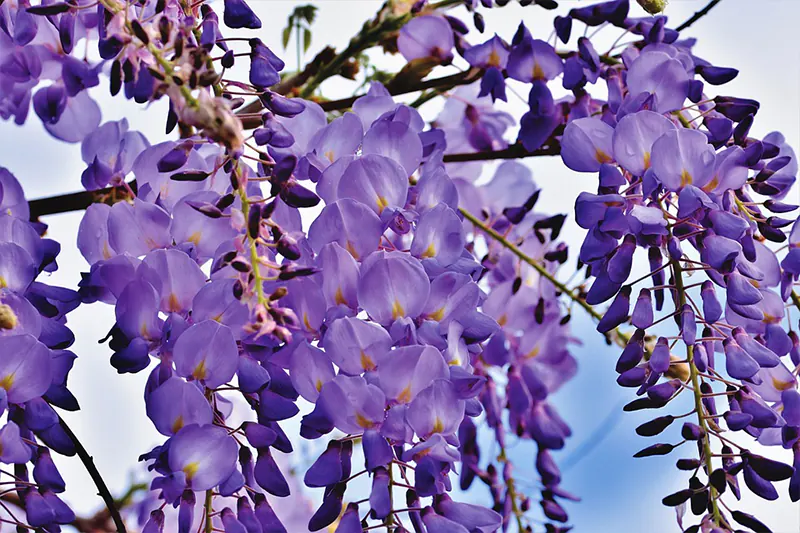
Finding the Right Wisteria
Once you decide to grow a Wisteria Bonsai tree, it’s essential to know that all Wisterias don’t have purple flowers. Most people want to grow a Wisteria for the beautiful purple flowers. There are different Wisteria cultivars that have white, pink, mauve, and blue flowers. Finding the right Wisteria for your Bonsai tree can be achieved by:
- Seeds: In late summer, a healthy Wisteria will produce seedpods. If you are happy with the color of the flowers on this climber, you can ask your friendly neighbor for a few pods. Alternatively, you can buy the right seeds from a reputable nursery. Wisterias germinate easily from seed.
- Cuttings: You can propagate Wisteria from cuttings. You must take the cuttings from the soft wood. The soft wood is the green branches that have not formed the woody bark yet. Cuttings must be up to six inches long, and you must cut them diagonally where you want the roots to form. The best time to propagate softwood cuttings is during spring. Dip the base of the cutting in rooting gel or powder, and plant in well-drained soil. Take a few cuttings as the success rate is not guaranteed. Rooting is also better in soil than in water.
- Buy a young Wisteria: For quicker results, you can buy a young Wisteria plant from an established nursery. These three to four-year-old plants have woody stems and branches and already have a shape you can use to style your Wisteria. If it stands tall, you can do heavy pruning on a Wisteria to assist with creating your Bonsai style. The branches you remove can be used as cuttings to create more Bonsai trees.
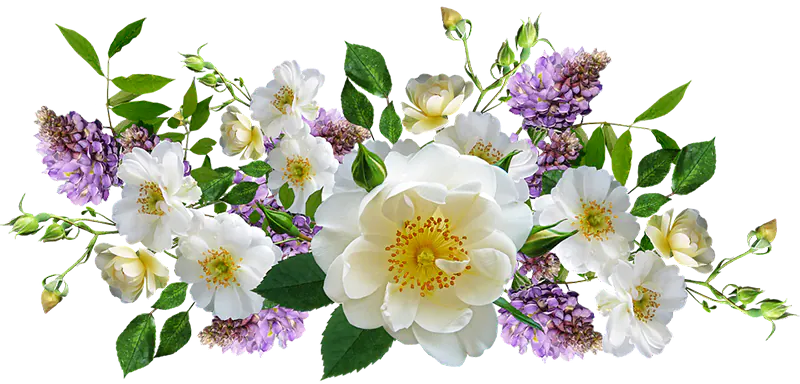
How to Train a Wisteria into a Bonsai Tree
Now that you acquired your Wisteria plant, you can start training it into a stunning Bonsai tree. Wisteria needs much attention and pruning to control its vigorous growing pattern. A lot of patience is required, but the reward of a great Wisteria Bonsai tree will be well worth it. Here are steps to follow to train your Wisteria:
Step One: Planting your Wisteria
Wisteria doesn’t like its roots to stay wet. Make sure that you have well-drained soil mixed with compost with enough nutrients. The size of the container you want to use must match the size of the tree. Have some wire handy to anchor the Wisteria to the container. Follow this guideline to plant your Wisteria in a Bonsai pot:
- Remove the plant from the plastic black bag or container.
- Trim the main root to be just under the depth of your Bonsai pot. Before trimming the main root, ensure enough feeder roots are left to maintain the plant’s health. Remove all dead roots. If your plant has many roots, you can feel free to trim away enough for the Wisteria to fit into the Bonsai pot.
- Put fine mesh over the watering holes to keep the soil from drawing away.
- Cut ten inches of binding wire and push through the watering holes in the Bonsai pot and the mesh.
- Fill the bottom of the container with fine lava rock and cover it with your Bonsai potting soil mix.
- Position your young Wisteria off-center in the pot bearing in mind the style you want to shape it and what the front side of the tree would be.
- Secure the tree to the Bonsai pot with the binding wire and trim excess wire off.
- Fill the rest of the pot with a well-draining Bonsai potting soil mix.
- Place in a bucket filled with water and wait till all air bubbles are out of the soil.
- The Wisteria can now be shaped into your chosen Bonsai style.
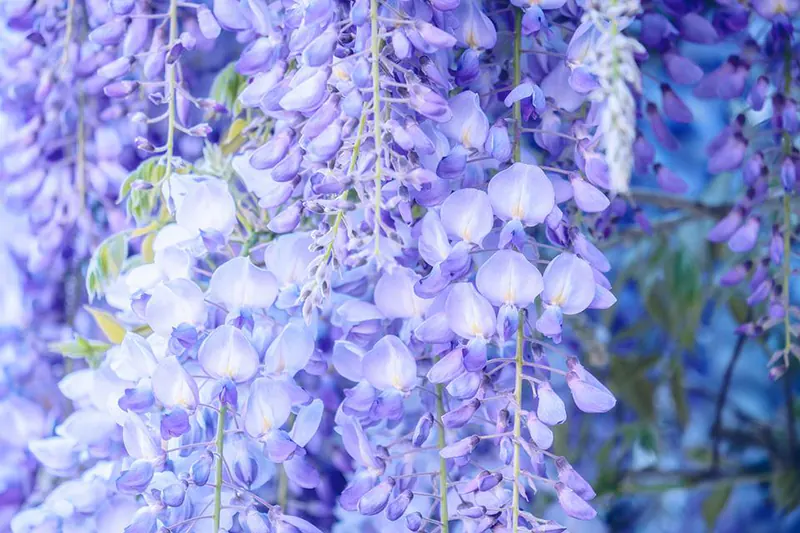
Step Two: Styling your Wisteria Bonsai Tree
After planting your Wisteria in a pot, you can start styling your tree. Plan ahead as the styling of your Bonsai can take a few years to achieve. Here is a guideline on how to style your Wisteria Bonsai tree:
- Put your Wisteria Tree on a turntable or round tray so you can turn the tree and have a look at all the sides of the tree.
- Decide which Bonsai tree style you want to achieve by looking at your tree and the different styles. The basic Bonsai tree styles are formal upright, informal upright, slanted, cascade, and semi-cascade.
- Your Wisteria might need heavy pruning to achieve the style, but fortunately, Wisteria trees can take it. Heavy pruning is done by cutting the trunk or branches with a branch cutter. Remove unwanted branches by cutting them off where they attach to other branches or the trunk. This is to prevent having unsightly stumps. With the correct pruning, you can create and maintain a cascading effect that can showcase the flowers the best.
- Remove most leaves with a pair of leave scissors, but leave a few for the photosynthesis process.
- Place the newly potted Bonsai tree in a shaded area with lots of natural light.
- Water regularly. Water until you see the water coming out of the watering holes.
- It is best to style your Wisteria with pruning because the branches and trunk tend to break when you want to bend and style it using wire.
Step Three: Maintenance Pruning
Maintenance pruning is the ongoing process of keeping the vigorous shoots under control and is an ongoing process. Your Wisteria will need a lot of maintenance pruning to become a stunning Bonsai tree:
- Over time the maintenance pruning will also reduce the size of the leaves.
- If you want more abundant blooms, you can remove the seedpods when they appear.
- Pruning the shoots will give your Wisteria more branches and a denser canopy.
- Wisteria has compound leaves. I’ve found that removing all the leaves but two on a shoot will also reduce the leaves’ size.
- Defoliation once a year also reduces the size of the leaves. This is done in the middle of summer before the next growth spurt of the Wisteria.
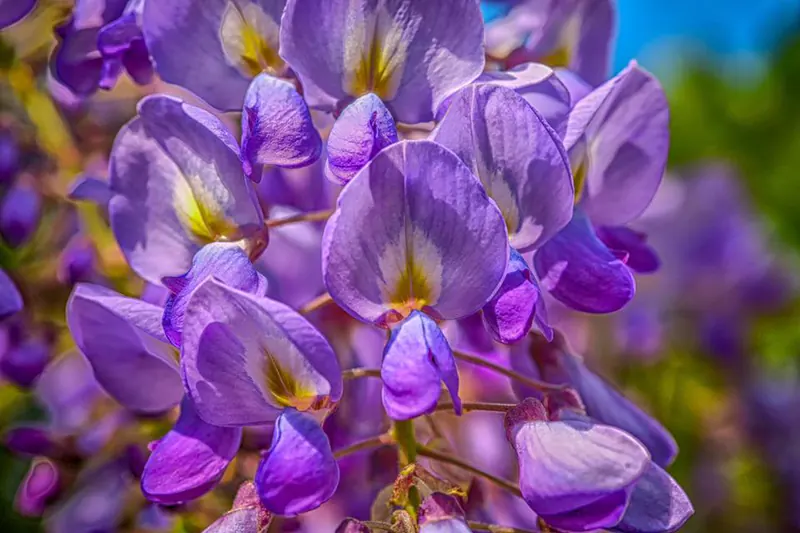
Step Four: Repotting
Repotting Wisteria Bonsai trees are very important to keep them healthy and to ensure that there are enough nutrients in the soil:
- Repotting your Wisteria would be necessary once a year while the tree is still young.
- Older trees can be repotted every second year.
- Root-bound trees need to be repotted as soon as you notice the telling signs.
- Symptoms can be that the roots start growing out of the watering holes, or the leaves of the Wisteria are turning yellow before autumn.
- If you tip the container and the roots have filled the whole container, it is time to repot your Wisteria.
- To repot your Wisteria Bonsai tree, you can follow the steps described in step one: planting your Wisteria.
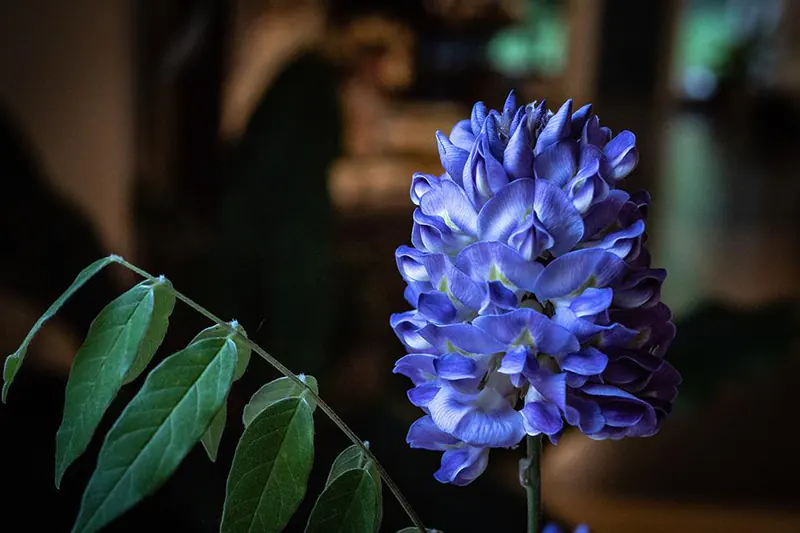
Tools Required
The tools that you would need to train your Wisteria to be a lovely Bonsai tree are the following:
- Good quality Bonsai potting soil that drains effectively.
- Small lava stone to help with water retention.
- Different size Bonsai pots.
- Fine mesh to cover water holes of the Bonsai pots.
- Binding wire.
- Wire cutters.
- A pair of leaf-cutting scissors.
- Pruning shears.
- Concave branch Cutters.
- A turntable or round tray to turn your tree for assessment from all sides.
- If your Wisteria’s trunk is thick, you may need a small hand saw to style it.
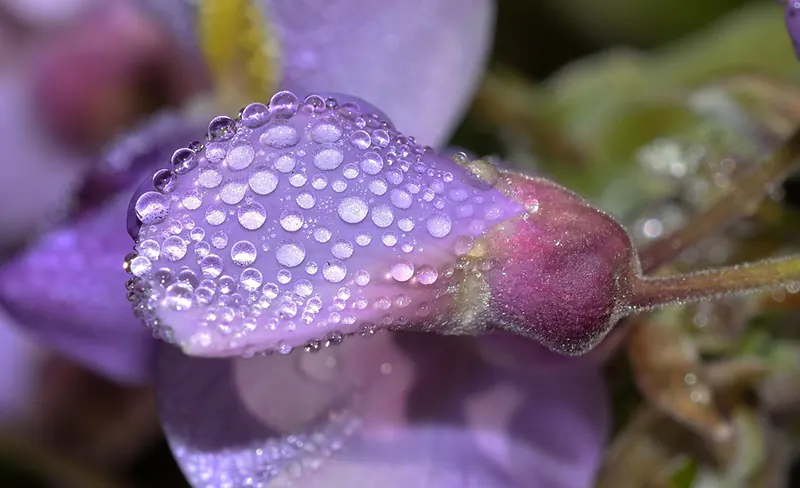
Final Thoughts
Wisteria can make an exceptional Bonsai tree. You need patience and a willingness to spend more than normal time on the tree. It will need a lot of pruning, watering, and repotting to keep it looking healthy. Believe me that you will be rewarded for your perseverance. The masses of purple or other color flowers are a picture to behold. Even in winter, the gnarled woody trunk and naked branches make a beautiful Bonsai tree.







